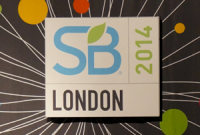 We’ve been sharing the green love for General Motors’ gas-electric Chevy Volt and the all-electric Spark, and for obvious reasons not so much when it comes to the company’s beloved but notoriously thirsty Corvette. However, the new 2015 Corvette demonstrates that a mix of technology and imagination can help preserve the identity of an iconic brand while setting a course for future improvement.
We’ve been sharing the green love for General Motors’ gas-electric Chevy Volt and the all-electric Spark, and for obvious reasons not so much when it comes to the company’s beloved but notoriously thirsty Corvette. However, the new 2015 Corvette demonstrates that a mix of technology and imagination can help preserve the identity of an iconic brand while setting a course for future improvement.
On the tech side, the new 2015 Corvette Stingray and and Z06 sport a new eight-speed automatic transmission that boosts the EPA highway rating to 29 miles per gallon, a 3.5 percent increase over the six-speed version.
What’s even more interesting is the unusual choice that GM has made for recycling leftovers from manufacturing the 2015 Corvette. Hint: Yes, it involves bats.
Saving the bats, one 2015 Corvette at a time
Compared to rescuing whales and polar bears, protecting our web-winged friends doesn’t exactly win hearts and minds in terms of corporate branding. Although bats play an important role in ecosystems as pollinators and insect-eaters, a lot of people put them in the icky-to-frightening category.
However, the fact is that U.S. bat populations are at particular risk right now due to the rise of a deadly fungus commonly known as white nose syndrome, and GM has risen to the call for preservation efforts.
In the latest development, last week GM announced that it is reclaiming leftover adhesive from manufacturing the 2015 Corvette Stingray for potential use in manufacturing stalactites for artificial bat caves. While a cure for white nose syndrome has yet to appear, artificial caves have emerged as a preventive strategy.
According to the Nature Conservancy, the engineered environment of artificial bat caves can be treated effectively with nontoxic fungicide, preventing the fungus from getting a foothold.
While the proposal is still under review by conservation experts, GM feels pretty confident that the bats will flock to its artificial stalactites.
As for the adhesive reclamation process, that’s practically a no-brainer for the company. As described by GM, body parts for the Corvette are joined with the help of a structural adhesive, which is applied by robots. Dried adhesive accumulates on the robots, and they need to be cleaned regularly in order to function efficiently. The result is a quantity of excess gunk that needs to be disposed of.
Given GM’s longrunning focus on landfill-free facilities, it stands to reason that the company would be on the lookout for ways to reclaim the leftover adhesive, and it looks like bats will be the beneficiaries.
Saving the bats, one Volt at a time
GM has been involved in bat conservation for a number of years now. Its other effort involves reclaiming Chevrolet Volt battery covers for bat ‘nests’ housing up to 150 little brown bats each.
The battery covers, which are otherwise difficult to recycle, can also be used as nesting boxes that attract certain birds including wood ducks, owls and bluebirds. Also included in the group is an endangered Asian waterfowl we’ve never heard of, the scaly-sided merganser.
To round things out, we’ll apologize for missing National Bat Week (that was last week) and pass along a couple of organizations that GM recommends for more information about bats, Bat Conservation International and Save the Bats.
Image: 2015 Corvette z06 © General Motors
Follow me on Twitter and Google+.






























